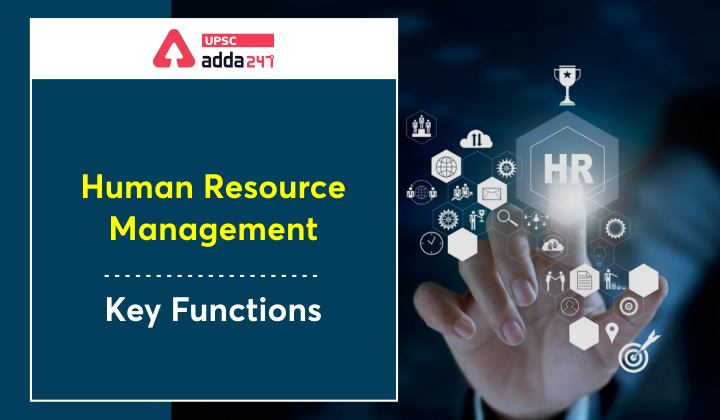Table of Contents
Human Resource Management
- Definition: Human Resource Management (HRM) is a collective term for all the formal systems created to help in managing employees and other stakeholders within a company.
- HRM is an invisible agent that binds all the aspects of the organization to ensure smooth progress.
- Mandate of HRM: HRM is entrusted with the smooth functioning of an organization.
- The process starts with formulating the right policies for the job requirements and ends with ensuring the successful business growth of the company.
- Significance: Human Resource Management has a key role in allowing employers and organizations to reach their objectives, especially in the modern era, where organizations have become more people-centric than ever.
- Various studies have found that the people-centric approach in an organization pays great dividends in terms of enhanced employee performance and lower attrition rates.
- We have already discussed the elaborate definition, relevance and key Principles of HRM in detail. To read more, click here.
- In this article, we are going to discuss the key functions of Human Resource Management.
Key Functions of Human Resource Management
- Functions of HRM can be divided into the following categories-
- Employee Recruitment: Recruitment is the process of identifying talent gaps in a company and finding the right people to fill the roles. There are four stages in this process:
- Job analysis: This involves defining the various aspects of a job through job description and specification. Job description identifies the tasks required for a specific job and Jon Specification defines the requirements an individual needs to fulfill that job.
- Sourcing: This encompasses the different techniques a company employs to attract potential candidates to fill a given position (for example Advertisements).
- Screening and Selection: This is the process of evaluating the candidates who apply for the job. The evaluation parameters may include the skills, qualifications, competency, and job-related experience of the potential candidates.
- Selection of the right candidates: Once the best candidate has been selected, the next process that follows is onboarding. This is simply helping the new recruits become productive members of the company.
- Employee Orientation:
- Definition: it is the process of teaching new recruits the necessary skills, knowledge, and behaviors so that they can transition to the new company effectively.
- Methods used: Employee orientation is a broad process conducted by the HR department, and it’s done through different methods, including lectures, meetings, videos, mentoring, and team-building exercises.
- Key Objective: to provide new recruits with adequate information regarding the company’s targets, rules, policies, and activities.
- Employee Development
- Definition: It refers to all the efforts for improving personal, team, and organizational effectiveness. It is basically talent development.
- This involves aligning the employees’ skills with the company’s needs. HRM should also improve employee’s career opportunities.
- Importance: it is more economical to improve a company’s current workforce than to hire new employees in the future. So, employee development is a trade-off through which HRM saves money by avoiding the potential costs of hiring new employees.





 TSPSC Group 1 Question Paper 2024, Downl...
TSPSC Group 1 Question Paper 2024, Downl...
 TSPSC Group 1 Answer key 2024 Out, Downl...
TSPSC Group 1 Answer key 2024 Out, Downl...
 UPSC Prelims 2024 Question Paper, Downlo...
UPSC Prelims 2024 Question Paper, Downlo...





